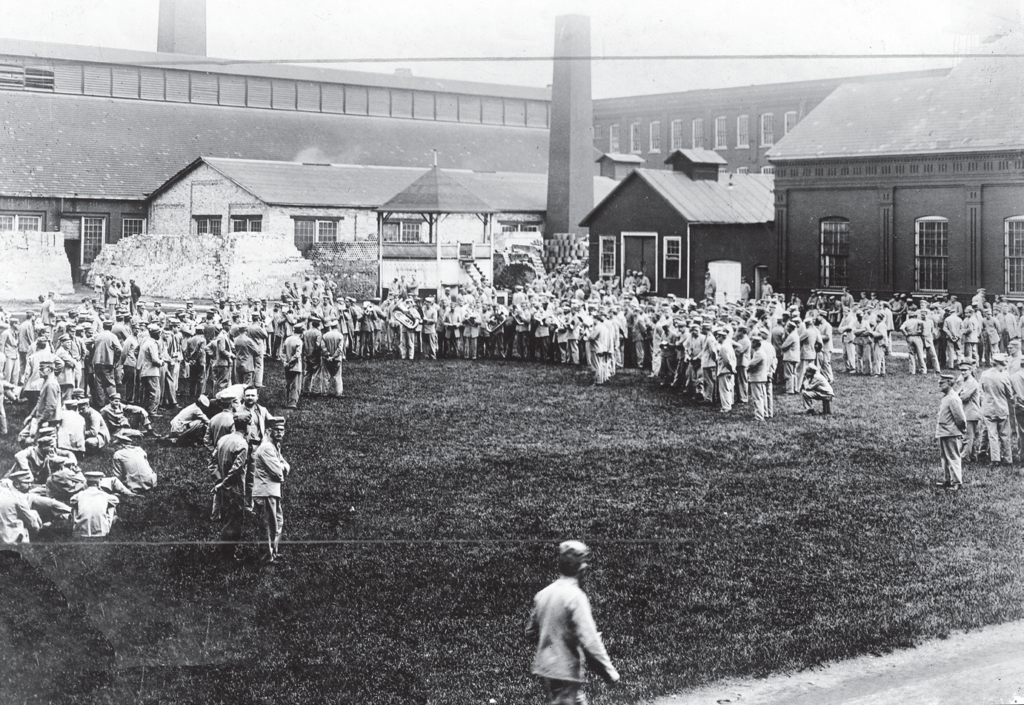On April 3, 1838, construction began on Michigan’s first state prison in Jackson. At one time, it was the largest walled prison in the world and still remains one of the biggest.
The legislature passed legislation authorizing a prison in 1838 and a temporary establishment was built as a wooden building and a fence of tamarack poles. Sixty acres were donated for the prison.
In 1839, 35 prisoners arrived to the establishment. Three years later a permanent prison was built and it housed many prisoners until 1934, where they were housed in a new prison which is north of I-94. Beginning in the 1880s, the warden at the time, H.F. Hatch really stressed for education and rehabilitation for the inmates. By 1882, it was the largest walled prison in the world!
Jackson was the early favorite for the prison, partly because the owner of a tract of newly purchased farmland in the area was also a member of the House committee considering the matter. Originally the prison was named Michigan State Prison, then State Prison of Southeast Michigan, and better known as “Jacktown” (Judge C. Williams Whitbeck, Jackson Legal News, 2010).
Due to the Prohibition Era, the increase of inmates increased and the need for a bigger facility was put into action. Alexander Groesbeck, Michigan’s governor during the time, was busily building a network of roads throughout the state. Alongside the roads, he built a parallel system of political patronage. “Convict labor, Groesbeck realized, could be used at a fraction of the cost of ordinary workers and he quickly concluded that rather than having too many inmates, he actually had too few”(Ibid). Pure corruption occured at Jacktown as the government saw the inmates as free labor that could be sent out to work certain industrial jobs in the area, to bring in not only money for the government, but allow the prisoners to stray outside their boundaries. Drugs, alcohol, weapons, and even weapons made their way back into the prison that led to more layers of complication and corruption. This type of work did stop, but it showcases the corruption that the 1920s played not only from the Prohibition, but also inside the political world.

Jackson Prison Inmates, 1942
From Kwame to Kevorkian to the infamous Purple Gang, Michigan’s most notorious criminals have passed through those walls. Famous inmate stories include a conspiracy involving Jackson’s Purple Gang Prisoners in the murder of a State Senator , and a famous daring helicopter escape.
But it’s not only important to Michigan history, it’s important to American history. As the United States remains the number one prison population in the world, we once again begin the discussion on prison reform. The conversation was not so different about 130 years ago. The only difference being in the 1880’s, reformers from Europe looked to this new nation as a model for building and improving their own prison systems. For example in Jackson, Chaplain Albert M. Ewert taught prisoners painting and poetry and Warden H. F. Hatch placed an emphasis on education and rehabilitation long before prisoner reentry programs were officially developed.
The appeal of a good prison story is nothing new. Whether it’s Shawshank Redemption or Orange is the New Black stories of crime and redemption have always made for great movies and TV shows. The Jackson Riot of 1952 with 2,600 inmates doing $2.5 million worth of damage over five days inspired the 1954 movie Riot in Cell Block 11.
This isn’t the only film with Jackson Prison ties. In 2009, the guests of the prison were Edward Norton, Milla Jovovich, and Robert DeNiro. After 2007 when the heart of the Southern Michigan Correctional Facility was finally closed, several film crews used the old cell blocks as filming locations including Stone, Conviction (starring Hilary Swank), and Street Boss.
Today the prison is still fully functioning.
Sources:
Elaine Brewster, “State Prison : Jackson“, Michigan History.
Rebecca Calkins, “How Prison History Shaped Jackson, Michigan and the World“, Awesome Mitton Blog, April 9, 2015.
Michigan History, March/April 2018, p. 9